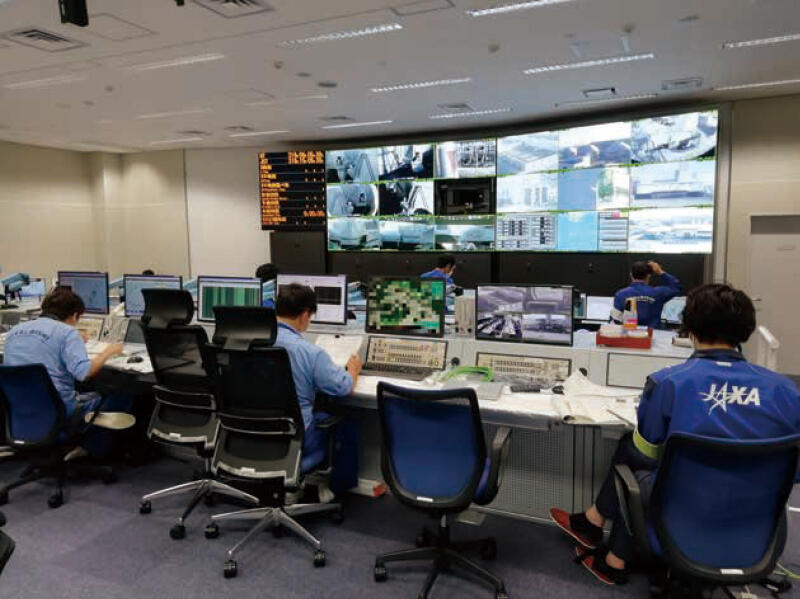Space Transportation Technology Directorate
Launch Pad and Movable Launcher
Liquid Flow Tests at
H3 Launch Vehicle Ground Facilities
The ground facilities for the H3 Launch Vehicle are being developed alongside the rocket body. In October and November 2020, the Tanegashima Space Center tested the flow of liquids to Launch Pad 2 (LP2), revamped for use by the H3, and to the newly built Movable Launcher 5 (ML5).
These tests involved flowing liquid oxygen and liquid hydrogen, the H3's propellants, from their respective storage tanks into LP2 and ML5, and marked the first time that liquid hydrogen and liquid oxygen had been fed into ML5 in the same way they would be at launch time. The purpose of these comprehensive ground infrastructure tests was to collect simulated data at the time the propellants are injected into the rocket as well as simulated data on launch day operations.

NAKAO Taichi, involved in developing the propellant ground facilities, reflected on the tests as follows:
"In addition to our ground infrastructure tests, there were a number of other events taking place at Tanegashima at the same time, including H-IIA launches and engine tests for the H3. These imposed certain restrictions, among which were predetermined volumes of liquid oxygen and liquid hydrogen available for the tests. The liquid oxygen test took more time than expected and, as we were approaching the maximum amount we were allowed to use, the personnel involved had to consider methods for achieving our test objectives with the remaining oxygen. A sense of tension surrounded the last test, and spontaneous applause burst out when we completed the test just shy of the upper limit."
The key to success proved to be "the collaboration and collective capabilities of JAXA and the manufacturer," acknowledged NAKAO. "At JAXA, the personnel in charge of developing the ground facilities as well as propellant engineers for the H3 Launch Vehicle and the ground facility operators were joined for the tests, and a wide range of opinions were incorporated as the tests proceeded. On the test days, the manufacturer's design engineers kept an eye on the data as the liquids flowed and issued precise instructions on the order and timing of valve operation, to which the operators responded resourcefully. This was not a fully preplanned operation but was instead an experience one might expect of a test, with decisions having to be made on the spot while watching real-time data."
Once the demonstration tests of ground facilities have been completed, the rocket and ground facilities as an integrated system will be tested. "We certainly hope to reflect our recent results in future tests to ensure a successful launch of the H3 Launch Vehicle. We will also be thrilled if we can make use of these results when designing future rockets and ground facilities."

Profile

|
|
|---|
All the images are copyrighted ©JAXA unless otherwise noticed.
- Home>
- Global Activity>
- Public Relations>
- JAXA’s>
- JAXA's No.82>
- Launch Pad and Movable Launcher Liquid Flow Tests at H3 Launch Vehicle Ground Facilities